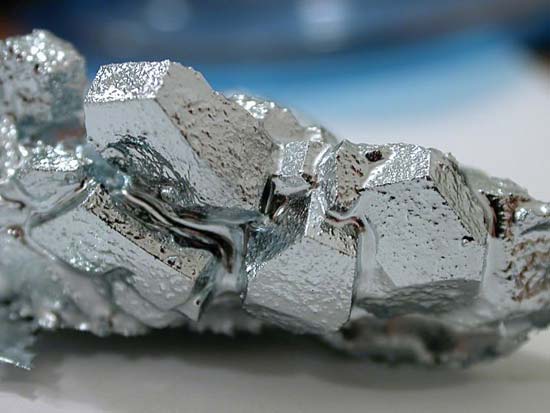Properties:
Indium, shortened as In, is a chemical element with atomic number 49. It is a part of the aluminum family and is located in Group 13 of the periodic table. It has a low melting point for metals, of about 156 Celsius. In pure form it sticks to itself or other metals very firmly.
Indium is a shimmering white, glossy metal with a density of 7.31 grams for each cubic centimeter. It is one of the softest metals ever known; Indium is much milder than lead. An abnormal property of indium is that it delivers a "tin cry." A tin cry is a scream-like sound made when the metal is twisted. Indium's fundamental spectral lines are a splendid indigo blue.
Indium has a boiling point of about 2000 Celsius and a melting point of about 156 Celsius. It has the uncommon property of staying delicate and workable at low temperatures. This property enables it to be utilized as a part of uncommon gear required for temperatures close to total zero. Absolute zero is the coldest temperature conceivable. It is about -273°C.
Indium metal breaks down in acids, however does not respond with oxygen at room temperature. At higher temperatures, it joins with oxygen to frame indium oxide .
Indium is gotten in its pure form by isolating it from zinc and different elements in zinc ores.
The health impacts of indium mixes are to some degree surprising. At the point when taken by mouth, they are generally safe. At the point when infused into the skin, they are extremely poisonous.

Applications:
- Indium is used in touch screen, flatscreen Tvs, solar panels.
- Indium is used in transistors and microchips.
- Indium can be used to give a mirror finish to windows of high buildings.
- Idnium is used as a protective film on special goggles.
- Indium can be used to coat ball bearings in racing cars.
- Indium is used for fire-sprinkler systems in shops and warehouses
- Indium is used aircraft parts, optical devices
- Indium is used in alloys to make materials much harder
- Indium is used in the manufacture of batteries, diverse electronic devices
For related products please visit:
Comments
Post a Comment